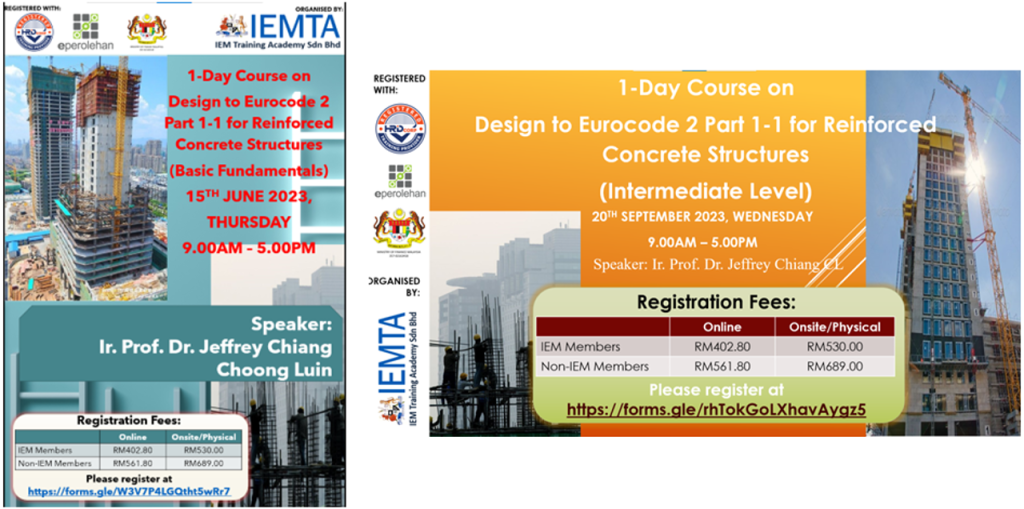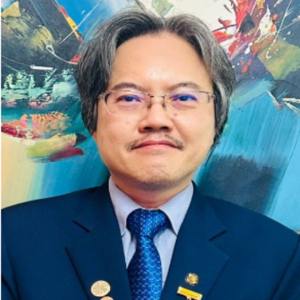The construction industry in some regional countries or economies such as Malaysia, Singapore and Hong Kong has seen major upheavals in civil and structural engineering design and construction practices over the last 15 years. The reason is that these Commonwealth economies had used British Standards (BS) for structural design since the British colonial days up to 2010 when the UK switched to the BS European Standards (EN) version. It was in line with the adoption of Eurocodes in the design and construction of structures in reinforced concrete, steel, timber, composites, masonry, and aluminium.
While Malaysia and Singapore have gone full swing into adopting Eurocodes in their construction industry practices since 2010, economies like Hong Kong have moved towards developing their versions of design standards by referencing the BS EN documents. That means the construction industry practitioners, particularly the designers, planners and contractors, want to ensure that their projects’ best practices align with the advanced standards. Of course, the underlying reason is also to safeguard their professional interests in maintaining and guaranteeing legal acceptance of their finished products and designs in line with updated provisions of the Building Bylaws and Acts of Parliament.

Therefore, there is a need for professionals in the construction industry, especially engineers, technologists and technicians, to uphold and safeguard the welfare and safety of the public. This could be achieved by educating and training the young generation to adopt existing standards and technologies available in their professional work approach. To this end, I am most happy to report that The Institution of Engineers Malaysia (IEM) has been the initiator and vanguard of this endeavour, first by publishing an IEM Position Paper on Concrete Design Standards for the Construction Industry in Malaysia After 2006 in 2004. It concluded that Malaysia has to switch from BS to Eurocodes in concrete design to be consistent with the UK’s decisions.
That IEM Position Paper was the tipping point in which the Department of Standards Malaysia (DSM) appointed IEM in 2006 to chair the Technical Committee to draft the MS EN1992 on reinforced concrete design for Malaysia. Subsequently, IEM was invited to chair other committees to develop and review various standards from 2011 to date. I do take it upon myself to train young engineers on using MS EN1992, which was organised by IEM twice in 2023. Figures 1 and 2 below illustrate the role played by IEM in educating and bringing awareness of adopting and practising the use of structural Eurocodes in Malaysia [Source: The Institution of Engineers Malaysia, www.myiem.org.my].
The author also intends to conduct more MS EN Eurocode 2 and Eurocode 3 training courses in 2024 and looks forward to having meaningful sharing sessions with young practitioners of civil and structural engineering in the industry. The Institution of Engineers Malaysia (IEM) is a learned society. It has nearly 50,000 members across Malaysia, and IEM would like to co-organise many of these training courses in collaboration with universities, both public and private.


Figure 1 – On the way forward to adopt and practice the use of MS EN Eurocodes in Malaysia (Source: Jurutera, 2014)

Figure 2 – Training courses on MS EN Eurocode 2 conducted by the author on behalf of IEM (Source: Jurutera, 2014)
As a way forward, it is my hope that practising professional engineers will be willing to share their experience with the next generation of engineers on the use of updated standards and codes of practice, ethics and conduct. This is especially important in the field of engineering in the construction industry.

About the Author:
IR PROF DR JEFFREY CHIANG CHOONG LUIN
Deputy President, The Institution of Engineers Malaysia (IEM), Professor (Civil Engineering),
Faculty of Engineering Built Environment and Information Technology, SEGi University
Ir Prof Dr Jeffrey Chiang Choong Luin, a distinguished figure in the field of Civil Engineering, currently serves as the Deputy President of The Institution of Engineers Malaysia (IEM) and holds the position of Professor in the Faculty of Engineering Built Environment and Information Technology at SEGi University. With a diverse and illustrious career, Dr Jeffrey Chiang has contributed significantly to both academia and the professional engineering sector. His journey includes roles as a Structural Engineer at ARUP Jururunding Sdn Bhd KL, Senior Lecturer at SIT (Klang Campus), Lecturer in Civil Engineering at Monash University Sunway Campus, and Associate Professor at UTAR, KL Campus. He also served as the Professor and Head of Civil Engineering at INTI International University Nilai Campus and as the Former Dean of the Faculty of Engineering & Built Environment at SEGi University. Dr Jeffrey Chiang’s leadership extends to various important roles, including Chair of Standards Malaysia, Technical Committee concrete structures design EC2, and Former Chair of IEM Technical Committees, covering Earthquake Design EC8 and Wind Load Design. His extensive contributions include serving as the Former Chair of the IEM Technical Division of Civil & Structural Engineering, Former IEM Honorary Secretary, Former IEM Honorary Treasurer, and Former IEM Vice-President, where he chaired Corporate Affairs/Activities.

